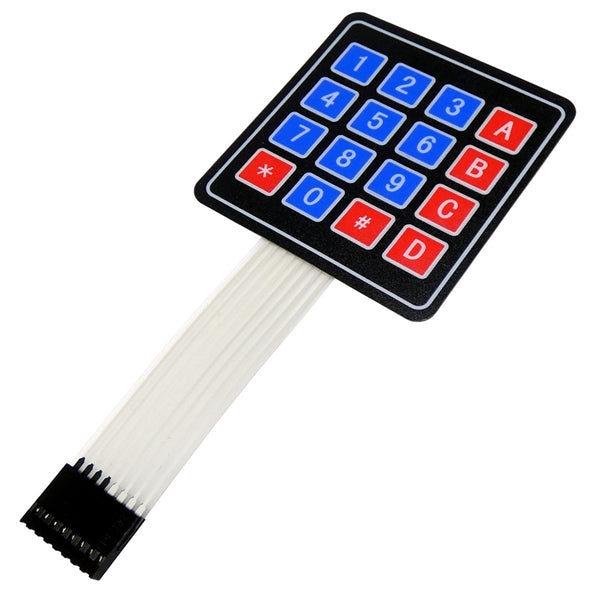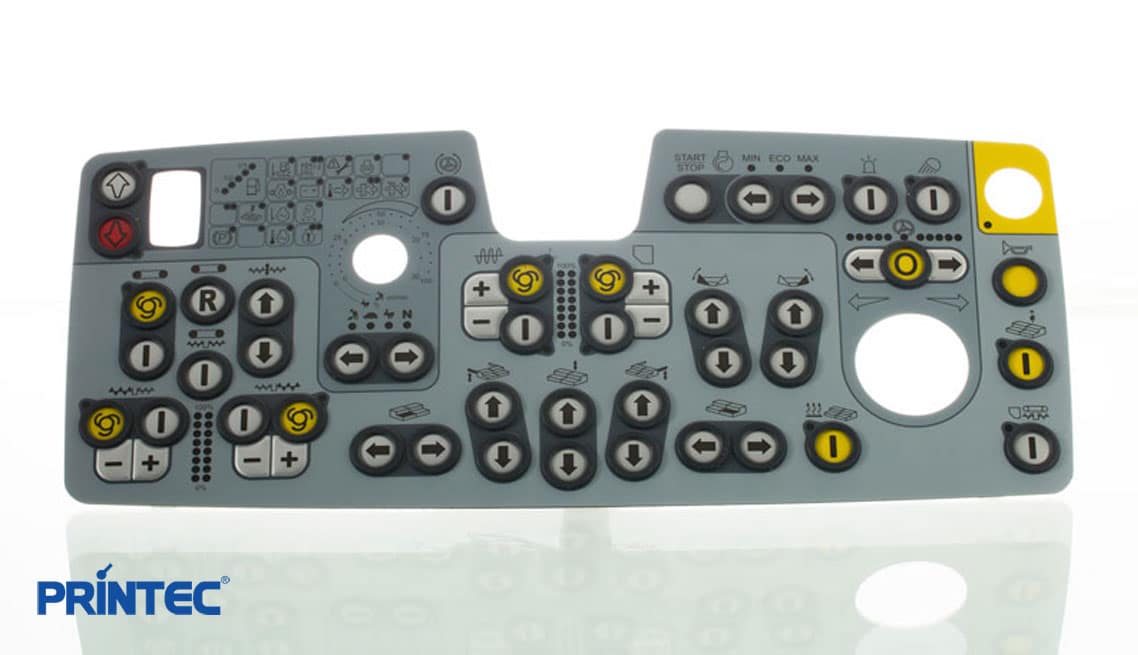Working with the right membrane switch manufacturer can greatly impact your product's quality.
Working with the right membrane switch manufacturer can greatly impact your product's quality.
Blog Article
Everything About Membrane Switch: Comprehending Its Design and Capability
When you think of the control user interfaces in contemporary devices, membrane switches frequently come to mind. These components are extra than simply buttons; they mix design and functionality seamlessly. Comprehending just how they function and what makes them efficient can transform your viewpoint on daily electronic devices. But, there are nuances to their design and performance that you may not recognize. Let's explore what collections membrane switches over in addition to other control systems.
What Are Membrane Layer Buttons?

Their seamless nature makes them very easy to clean and resistant to dust and dampness, an essential attribute in numerous environments. Membrane layer buttons can likewise be personalized concerning shape, dimension, and graphics, allowing suppliers to create one-of-a-kind user interfaces tailored to particular items. Plus, they're lightweight and slim, which helps in lessening the total mass of gadgets. On the whole, membrane buttons play a significant role in improving user experience throughout a wide array of applications.
Just How Membrane Layer Changes Work
When you push a secret on a membrane button, it turns on a simple yet effective system. The leading layer, often constructed from versatile material, pushes down onto a conductive layer under it. This activity bridges the space in between conductive traces, finishing an electric circuit. As quickly as the circuit closes, it sends a signal to the gadget's controller, which translates your input.
You'll notice that the tactile responses differs based upon the button layout, offering either a soft click or a much more pronounced feedback. When you launch the secret, the membrane returns to its original setting, resuming the circuit and stopping the signal. This process occurs practically immediately, ensuring a receptive user experience.
Membrane buttons are prominent because of their resilience and resistance to dirt and dampness, making them excellent for different applications, from family appliances to medical devices. Comprehending this procedure helps you value their widespread use.
Trick Components of Membrane Switches
Understanding the key elements of membrane switches is basic for grasping their capability and design. At the core, you'll discover the graphic overlay, which gives the visual interface for customers. Below that, there's a spacer layer that divides the circuit layers, ensuring that they do not make get in touch with till pressed. The circuit layer is where the magic occurs; it includes conductive traces that finish the circuit when you push the button. One more vital component is the glue support, permitting the button to follow surfaces safely. Finally, the safety layer shields against environmental factors and put on, extending the button's lifespan. Each part plays a significant function in ensuring dependable performance and individual interaction. By recognizing these components, you'll gain understanding into just how membrane layer switches run and their significance in various applications.
Materials Made Use Of in Membrane Switch Over Layout
The performance and longevity of membrane layer changes heavily depend on the materials utilized in their design. You generally encounter polyester and polycarbonate as primary substrates as a result of their outstanding toughness and adaptability. These products stand up to scratches and chemicals, making them optimal for demanding settings.
The conductive layers often use silver or carbon, selected for their integrity and conductivity. membrane switch manufacturer. Silver gives remarkable efficiency, while carbon is a cost-effective alternative. For the overlay, you might take into consideration a matte or glossy finish, relying on your visual needs and individual experience
Adhesives play an essential role also; they bond layers securely and assure long life. Make sure to choose adhesives that stand up to ecological elements like temperature and humidity. Finally, do not neglect the significance of an excellent printing technique for graphics, as it boosts both functionality and aesthetic find more information allure. Picking the ideal products will assure your membrane button stands the test of time.
Style Factors To Consider for Membrane Switches
While developing membrane switches, it's important to take into account different aspects that influence their capability and customer experience. Begin by focusing on the design and button size; make sure they're intuitive and very easy to browse. Consider the tactile feedback you wish to provide-- will users require an obvious click or a softer touch? Furthermore, think of the products you'll use, as they'll affect resilience and appearances.
Don't ignore the graphic design; clear labeling and color comparison are substantial for presence. Validate your layout suits environmental aspects, like wetness or temperature level variations, which could impact efficiency. Keep in mind the value of testing models with real customers to gather feedback and make essential modifications. This iterative procedure helps you improve the layout, verifying it fulfills both useful and aesthetic needs properly. By carefully considering these aspects, you'll develop a membrane button that boosts usability and satisfaction.
Applications of Membrane Layer Buttons
Membrane layer buttons are functional parts discovered in various applications, from industrial tools to consumer electronics. You'll see their effect in makers that need long lasting interfaces and in devices that gain from streamlined styles. Recognizing these applications helps you appreciate the capability and practicality of membrane layer buttons in day-to-day modern technology.
Industrial Tools Use
When you're wanting to boost the performance of commercial tools, membrane switches use a trustworthy solution that integrates longevity look at more info with easy to use style. These buttons are best for severe environments, giving resistance to dust, wetness, and chemicals. You'll locate them in control panels for making makers, heating and cooling systems, and clinical devices, where accuracy and responsiveness are crucial. Their low account indicates they fit seamlessly right into different tools, saving beneficial area while maintaining ease of use. With adjustable graphics and backlighting options, you can produce an user-friendly user interface for operators, enhancing efficiency and safety and security. Plus, their lengthy life expectancy reduces upkeep costs, making them a smart investment for your industrial applications. Accept membrane layer switches to streamline your operations and improve general efficiency.
Consumer Electronic Devices Combination
In the domain of customer electronics, membrane layer buttons play a vital duty in enhancing individual interaction and tool capability. Membrane buttons also assure toughness and resistance to dust and dampness, extending the lifespan of your electronics. By selecting membrane switches, you boost not just the functionality however also the style of your tools, making everyday interactions smooth and enjoyable.
Benefits and Disadvantages of Membrane Buttons
While membrane layer buttons supply an array of benefits, they also come with some downsides that you need to consider. One considerable advantage is their portable layout, making them perfect for space-constrained applications.

Membrane switches can have a much shorter life-span compared to mechanical buttons, specifically under heavy usage. They can likewise be much less tactile, which might influence individual feedback during operation. Stabilizing these pros and disadvantages will certainly help you establish if membrane buttons are the ideal fit for your task.
Often Asked Inquiries
For How Long Do Membrane Changes Normally Last?
Membrane layer changes generally last in between 5 to ten years, relying on usage and environmental conditions. You'll wish to review factors like wear, direct exposure to wetness, and temperature variations to evaluate their longevity successfully.
Can Membrane Layer Changes Be Customized for Certain Designs?
Yes, you can customize membrane switches to fit details designs (membrane switch manufacturer). You'll have the liberty to choose colors, shapes, and layouts that match your project's demands, ensuring they blend perfectly with your general aesthetic
What Is the Expense Range for Membrane Layer Switch Manufacturing?
The price range for membrane layer button manufacturing usually falls in between $1 and $10 each, depending on elements like layout complexity, amount, and materials. You can get quotes from producers to discover the ideal alternative.

Are Membrane Layer Switches Water Resistant or Resistant?
Membrane layer buttons can be created to be water resistant or resistant, depending on materials made use of and construction approaches. If you require them for damp atmospheres, assure you specify those needs during the layout process.
Exactly How Do Membrane Layer Switches Over Compare to Typical Switches?
Membrane switches are normally thinner and more versatile than typical buttons, supplying a streamlined style. find here They're usually much easier to cleanse and integrate, but might not give the responsive responses you're used to with mechanical choices.
Verdict

Report this page